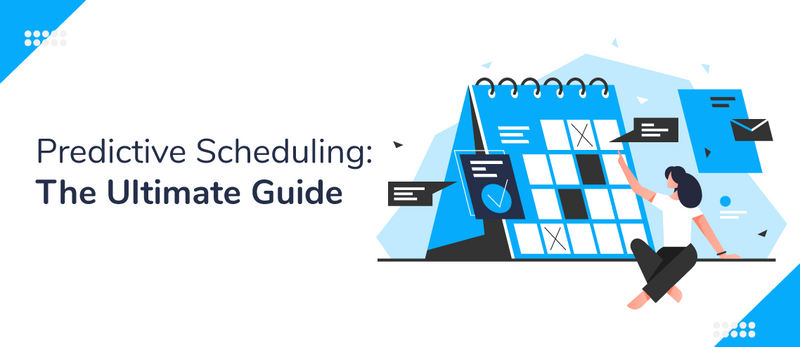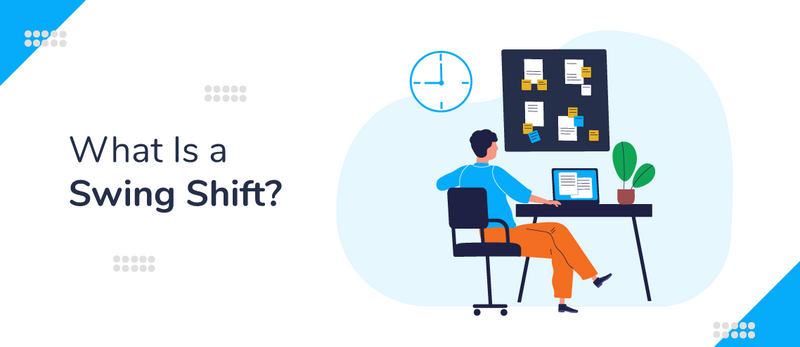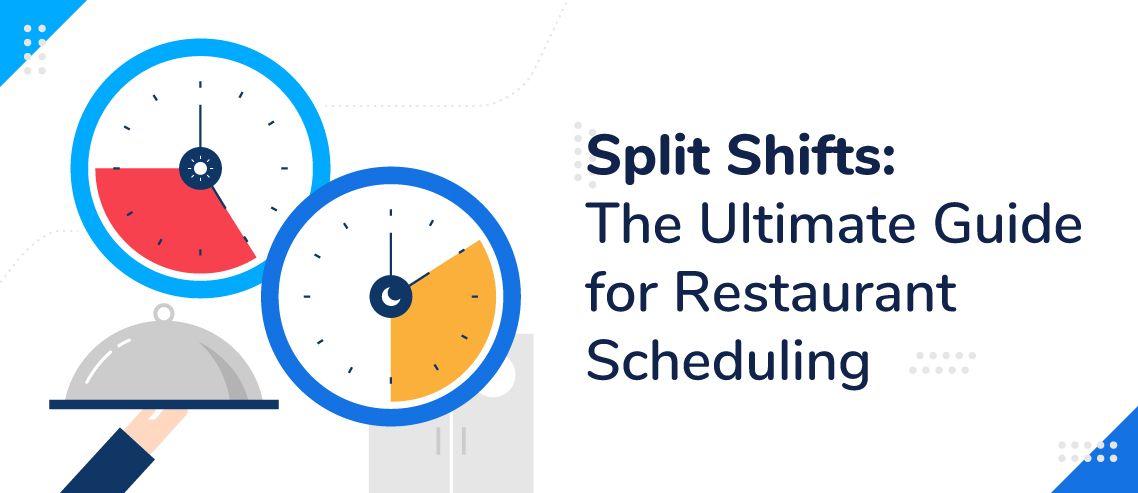Predictive Scheduling: The Ultimate Guide for Small Businesses

Businesses today must balance multiple priorities to stay afloat, let alone thrive in a new economy. Product development, marketing, sales, and HR are constantly evolving. And more robust employment laws — such as predictive scheduling — are adding to the challenges management faces.
There is a rise in predictive scheduling laws across the U.S. over the last few years. But determining what they mean for you as an employer or as a worker can be confusing. So in this article, we will cover what these laws cover and how to comply. That way, your company can continue to grow despite additional regulation.
What is Predictive Scheduling?
Predictive scheduling encapsulates laws that require employers to provide employees with schedules adequately ahead of time. This also includes any changes to schedules after they have been created or agreed upon.
These predictive scheduling regulations mostly apply to retail, janitorial, hourly, and restaurant shift workers. This is to oppose short notice scheduling practices prevalent in these industries. These laws are designed to limit last-minute, back-to-back closing and opening shifts, and on-call schedules.
Why is Predictive Scheduling Important?
Also called “fair scheduling laws,” there are numerous reasons that predictive scheduling is becoming the norm. Firstly, they are designed to protect employees in the following ways:
- Work / Life Balance – It allows workers to balance their personal and work life. Someone may have other scheduled events outside of work such as social events, child care, or doctor’s appointments. It also helps with income planning.
- Managing Two Jobs – Many employees also hold multiple jobs at one time. Knowing when they will be scheduled to work is essential for allowing them to commit to availability at each workplace.
- On Call Scheduling – Being on call — where you are not guaranteed a shift but must be available just in case — is problematic for many workers. They cannot plan activities or obligations, yet forgo pay if they are not called in.
And while employers may feel that predictive scheduling is a burden, it actually helps businesses. First of all, it can increase employee retention while reducing dissatisfaction and high turnover. This saves time and money on training new employees.
What Are the Predictive Scheduling Laws?
There are various forms of predictive scheduling laws, aimed at creating a more fair environment for workers. They include:
- Additional Notice – Employers must hand out schedules ahead of time (typically 1 to 2 weeks).
- On Call Laws – On call employees will get a premium payment even if they don’t work that shift. Employees cannot be fired or otherwise punished for
- Schedule Changes – Changing employees’ schedules within a certain time frame before their shift will result in an extra payment to the employee, and potentially a fine paid to the city.
- Fairness to Part Time Employees – New employees are protected with an estimated schedule as well as being treated equally for promotions if they are part time.
- Respecting Off Days – Employers cannot fire or issue punishment to workers for not coming in on their days off.
- Limits on “Clopenings”– If an employee works a closing shift followed by an opening shift the next day, they must be given enough rest or paid a bonus. The employee must also sign off on the close-open schedule first.
Where is Predictive Scheduling Already a Law?
Various regions across the U.S. have already put predictive scheduling into law. Jurisdictions that have already passed fair scheduling laws include:
- NYC
- Oregon
- San Francisco
- Seattle
- Washington DC
Predictive scheduling is likely to be implemented in additional states, counties, and cities. Therefore, every business should be prepared ahead of time to accommodate their employees accordingly.
How to Prepare for Predictive Scheduling
Changing your business practices from on call scheduling to predictive scheduling will require some adjustment. However, you can make the transition more seamless with the following preparation measures:
- Listen First – Know your employee’s availability, and run their schedule by them first.
- Avoid Clopenings – Aim to schedule different employees for opening and closing shifts to avoid steep fines.
- Build Good Habits – Post schedules early and often, well ahead of the required notice period.
- Find Your Volunteers – Ask your employees if they are willing to work short-notice or off-day shifts and get written agreement.
- Use a Scheduling App – It’s easy to get lost when organizing employee schedules. Lean on a scheduling tool to make it easier.
Manage Predictive Scheduling With ZoomShift
The best way to stay on top of your predictive scheduling is with a tool like ZoomShift. It provides you everything you need to schedule efficiently, lawfully, and accurately. And with ZoomShift, you have everything you need to make schedules in one place.
There are several benefits to using ZoomShift to manage predictive scheduling:
- Centralize Scheduling – Instead of jumping back and forth between various apps, simplify your workflow and use ZoomShift for everything. It has desktop, iOS, and Android versions so you can use it wherever and whenever you need it.
- Easily Track Time – Keep an eye on overtime, conflicting shifts, and other issues to keep payroll costs in check.
- Avoid Human Error – Create manager and supervisor permissions to sign off on scheduling changes. Catch missed shifts, early clock-ins, and other errors fast. This prevents accidentally violating predictive scheduling laws or paying fines.
- Save Time – Pen and paper is old school. Create a schedule just once in ZoomShift, then use the copy feature to replicate it for the next period, or for other employees.
- Worker Accountability – Easily share employee schedules to any device. Eliminate excuses for not knowing shift or schedule times. Maintain documentation to prove your compliance with predictive scheduling laws.
- Final Thoughts
Today’s business world is rapidly changing. New technologies, new legislation, and a “new normal” due to coronavirus contribute to an incredibly complex landscape to navigate. Companies must leverage smart tools and technology to meet these new challenges, otherwise they risk falling behind.
By better understanding predictive scheduling laws, you can protect yourself whether you are a worker or employer. And by using a specialized platform like ZoomShift, you increase your ability to meet requirements without reducing productivity — a recipe for a healthier bottom line.
JD enjoys teaching people how to use ZoomShift to save time spent on scheduling. He’s curious, likes learning new things everyday and playing the guitar (although it’s a work in progress).



